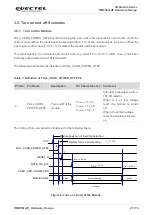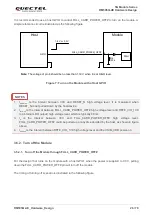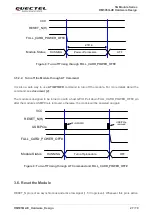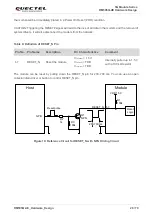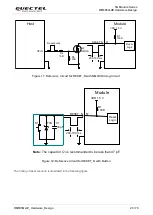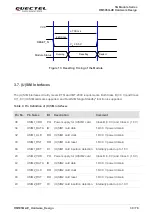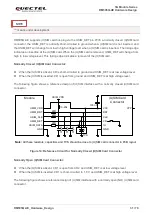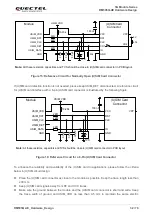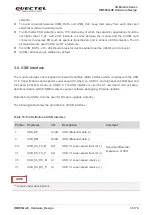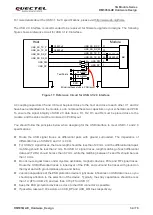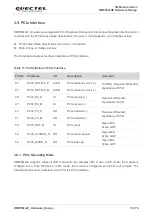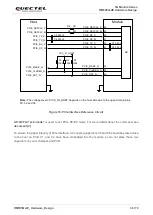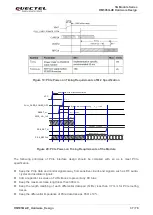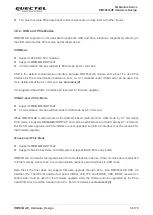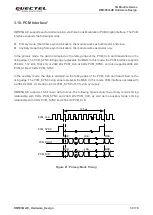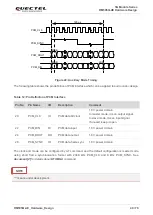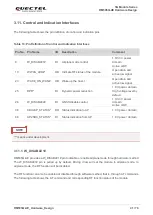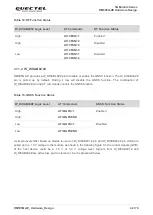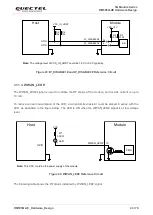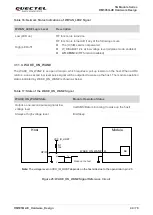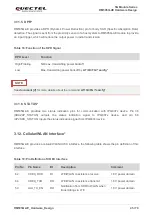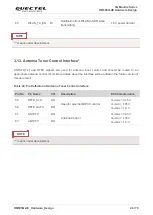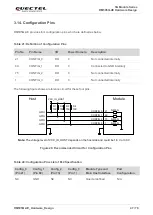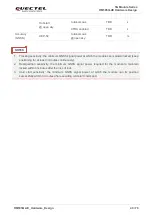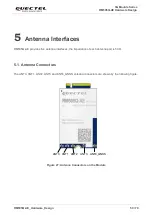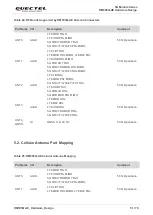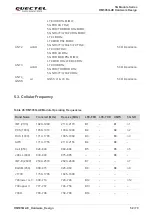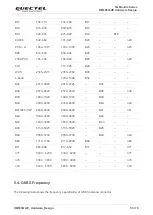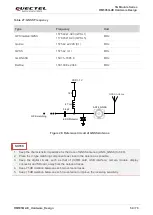
5G Module Series
RM505Q-AE Hardware Design
RM505Q-AE_Hardware_Design 39 / 79
3.10. PCM Interface*
RM505Q-AE supports audio communication via Pulse Code Modulation (PCM) digital interface. The PCM
interface supports the following modes:
⚫
Primary mode (short frame synchronization): the module works as both master and slave.
⚫
Auxiliary mode (long frame synchronization): the module works as master only.
In the primary mode, the data is sampled on the falling edge of the PCM_CLK and transmitted on the
rising edge. The PCM_SYNC falling edge represents the MSB. In this mode, the PCM interface supports
256 kHz, 512 kHz, 1024 kHz or 2048 kHz PCM_CLK at 8 kHz PCM_SYNC, and also supports 4096 kHz
PCM_CLK at 16 kHz PCM_SYNC.
In the auxiliary mode, the data is sampled on the falling edge of the PCM_CLK and transmitted on the
rising edge. The PCM_SYNC rising edge represents the MSB. In this mode, PCM interface operates with
a 256 kHz PCM_CLK and an 8 kHz PCM_SYNC of 50 % duty cycle only.
RM505Q-AE supports 16-bit linear data format. The
following figures show the primary mode’s timing
relationship with 8 kHz PCM_SYNC and 2048 kHz
PCM_CLK, as well as the auxiliary mode’s timing
relationship with 8 kHz PCM_SYNC and 256 kHz PCM_CLK.
PCM_CLK
PCM_SYNC
PCM_DOUT
MSB
LSB
MSB
125
μ
s
1
2
256
255
PCM_DIN
MSB
LSB
MSB
Figure 21: Primary Mode Timing

